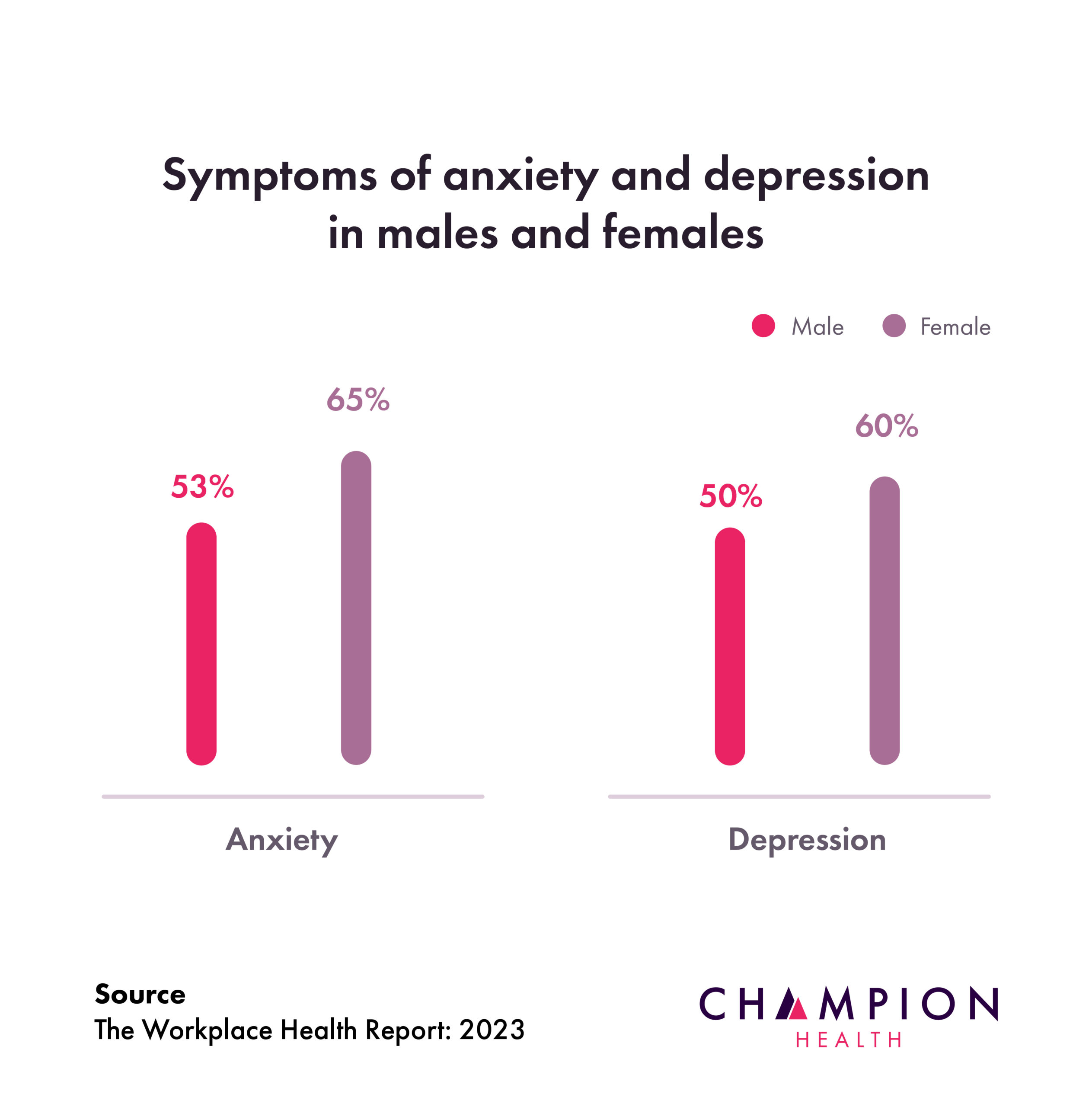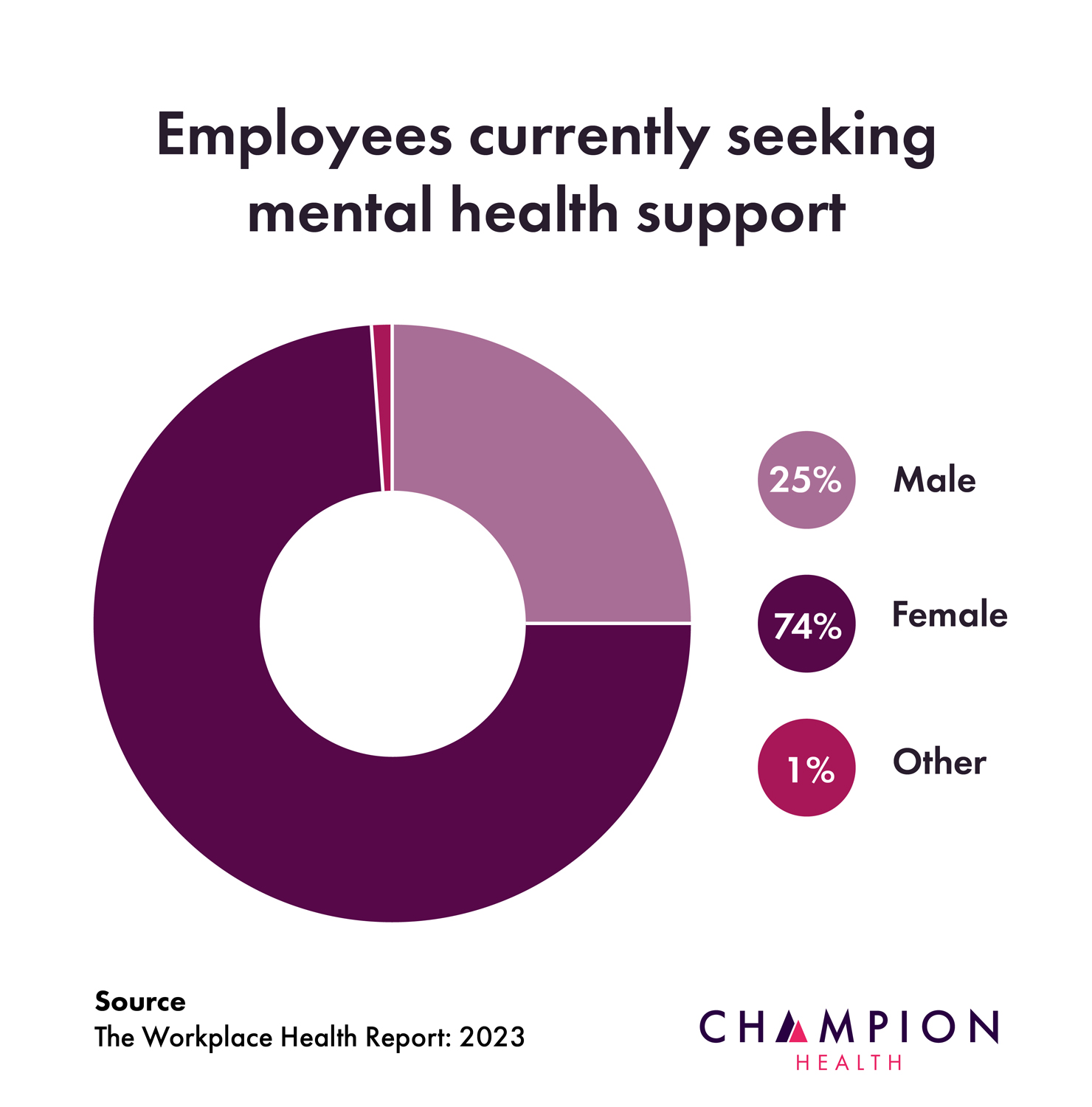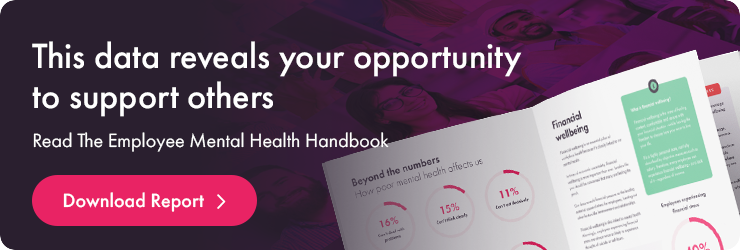Diving into depression statistics in the UK reveals the considerable toll the last few years have taken on everyone’s mental health.
To make matters worse, these effects have permeated into our workplaces, with millions of employees experiencing depression at work.
Part of understanding the reality of the challenge posed by workplace depression is getting to grips with the latest research surrounding it. The statistics outlined within this article suggest that this challenge is a significant one facing organisations.
Read on to discover:
- Depression statistics UK
- Workplace depression statistics UK
- Workplace depression statistics: the cost for employers
Note: Looking for statistics on more mental health challenges? Read this article for a comprehensive look at mental health statistics.
Depression statistics UK
Depression is one of the most prevalent mental health disorders, affecting around 1 in 6 adults in the UK. It is also associated with other mental health issues, such as anxiety, stress and loneliness.
Research shows that women are twice as likely to experience depression than men. However, 15% of women receive treatment for depression, compared to only 9% of men.
Across the UK, rates of depression are still significantly higher than prior to the pandemic. Around 17% of adults in the UK experienced some form of depression in summer 2021, compared to just 10% before the pandemic.
And depression is not just a public health issue. It also presents significant challenges for organisations.
Workplace depression statistics UK
This year, Champion Health revealed the impact and prevalence of depression among UK professionals in the Workplace Health Report.
The Champion team set out to discover the health challenges faced by UK employees in every area of wellbeing, from financial wellbeing to musculoskeletal health, energy levels, social wellbeing and beyond.
Using clinically validated measures, the team analysed the anonymous data of over 4,000 employees, across a range of sectors and demographics.
The result was a comprehensive range of employee wellbeing statistics. When it came to workplace depression statistics, we discovered that:
- 56% of employees are experiencing symptoms of depression
- Female employees are 20% more likely to experience symptoms of depression
- 61% of employees aged 16-24 are experiencing symptoms of depression
- Only 10% of employees are currently seeking mental health support
Read on to learn more about these findings.
1. 56% of employees are experiencing symptoms of depression
Champion’s research found that 56% of UK workers are currently experiencing at least mild symptoms of depression.
1 in 4 employees also meet the criteria for “clinically relevant symptoms” of depression, suggesting they would benefit from support from a qualified mental health professional.

2. Female employees 20% more likely to experience symptoms of depression
Champion’s research also revealed that female employees are 20% more likely to experience depression, compared to their male colleagues.
This data ties in to research by Deloitte, which found that female employees fared poorer throughout the pandemic due to factors such as household responsibilities and increased workloads.

3. 61% of employees aged 16-24 are experiencing symptoms of depression
Champion’s research also revealed that younger employees are more likely to be affected by symptoms of depression. 61% of employees aged 16-24 are experiencing symptoms of depression, which is the highest out of all age groups.
Employees aged between 25 and 34 were the next most affected group, with 60% experiencing symptoms of depression.
Findings from a separate study by Deloitte suggested that pandemic-related worries have had a greater impact on younger employees. The data also takes on greater significance alongside research which found that younger employees are less likely to disclose mental health issues to their employers.

4. Only 10% of employees are currently seeking mental health support
Alarmingly for organisations, Champion’s data revealed a reluctance around employees engaging with mental health support, despite the high prevalence of depression and anxiety symptoms.
Despite nearly 19% employees reporting a current mental health diagnosis, just 10% are currently seeking support for their mental health.
Of those seeking support just 25% identify as male, suggesting that male employees are finding it particularly difficult to reach out for help, even when they’re struggling.

These statistics highlight the importance of employers providing visible, accessible and stigma-free support, that will ensure their employees access the right help when they need it.
Workplace depression statistics: the cost to employers
Additional research reveals the cost to organisations of workplace depression, and the importance of employees accessing support.
Depression makes it difficult for employees to focus and engage with their day-to-day tasks. As a result, it diminishes their productivity and contributes to the cost of presenteeism.
The effects of depression can also be so severe that employees find it difficult to go to work at all. Workplace depression is responsible for 109 million lost working days in the UK every year, at a cost of £9 billion to organisations.
These statistics highlight the importance of employees accessing the support they need, particularly because at least 50% of employees with depression are not treated.
What these depression statistics mean for organisations
The depression statistics in the UK highlight the scale of the public health challenge posed by depression. The workplace depression statistics reflect the key role employers have to play in facing up to this challenge.
When employees are going through a challenging time, that is an excellent opportunity for their leaders and managers to show them how much they care.
There are various ways you can support an employee who is experiencing symptoms of depression, including:
- Encouraging staff to discuss mental health during 1:1s
- Sharing stories about when you’ve struggled mentally
- Signposting towards internal wellbeing offerings (such as occupational health) and external support services (such as Samaritans)
If you are seriously concerned about an employee’s mental wellbeing, then discover ways to support them in this article: how to support an employee in crisis.
The scale of the challenge posed by employee depression is significant, but by putting the right practices in place, employers can take significant strides towards supporting their employees when they really need it.






